If you’re looking for the right direction on how to start a white paper, this article and its template will be an ideal game-changer. With both relevant example discussions as well as how to apply them, your writing and marketing will take a step up by the end of this reading.
Spend any time in business or technology, and the term “white paper” will be heard or seen. Part research, part marketing, the white paper is an essential technical explanation of a product or service or project with supporting research. The paper’s goal is to take what might be a complex or multi-faceted activity and package it in a digestible form that provides depth but also gives the reader an ability to understand the totality of the issue as well.
Interestingly, the use of paper was not originally created by a private side business. Instead, it originated with the British government, frequently being used to document and explain significant program issues or government policy with greater depth than a 20-second sound-bite briefing format.
The format began to be borrowed by businesses in the 1970s and really came alive in the 1980s with the explosion of technology and portfolios of ideas and concepts that needed both technical explanation and distribution to lots of stakeholders at once.
However, despite all the research and logical explanations provided, white papers are fundamentally written to persuade an audience towards a specific call to action, whether that is an agreement, investment, purchase, support or engagement.
Such a paper is a technical document that provides a given solution for a defined problem, using research and facts to support its proposal to the reader.
As noted above, the white paper’s design focuses on explanation. That includes an introductory narrative to introduce the topic to the reader, an educational pitch of the proposal, a technical explanation of how it works based on facts, research and analytical conclusions, and a summary.
A white paper and related documents can be distinguished from typical marketing or advertising communication in that the material provided is notably detailed and in-depth. Where brochures, ads, pamphlets, and memos tend to be very high-level and summarized, white papers go in the opposite direction.
It combines factual evidence that can be confirmed independently with a persuasive argument for the audience to agree then or take action afterward. It often focuses on a problem and shows how that can be successfully solved by the proposal of the paper.
Many tend to describe white papers as “academic” in style versus the quick slogans often found in advertising, and an average paper ranges at approximately 2,500 words. Marketing and advertising punch packages tend to be much smaller, usually no more than 200 words.
Free Templates
Given the general structure above, and the fact that white papers can be addressed to different audiences for different purposes, the smart approach is to develop templates.
This makes it easier to:
- Keep a consistent message across all audience targets and paper type
- Produce new and updated papers quickly
- Stay in tune naturally with the information flow to the market and industry.
Remember, the social media channels and community connections that get the most attention are those that stay active and continue to push valuable information to their audiences. So one example is never enough. You can download our easy-to-use and customised white paper from the templates below:
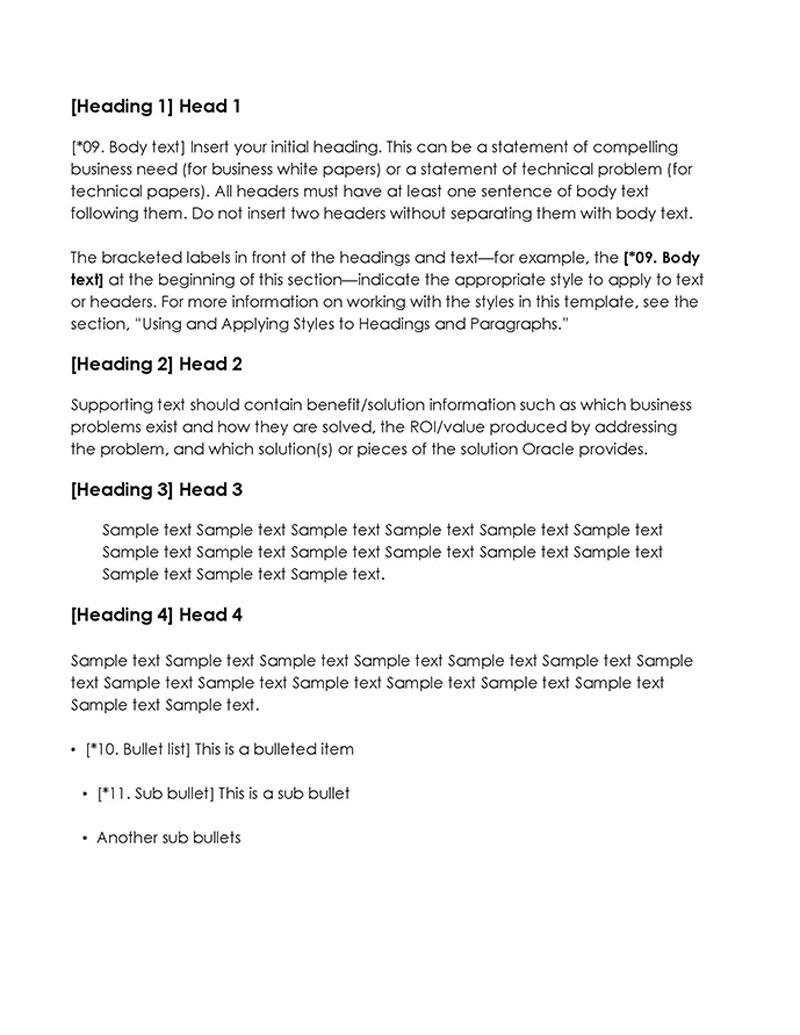
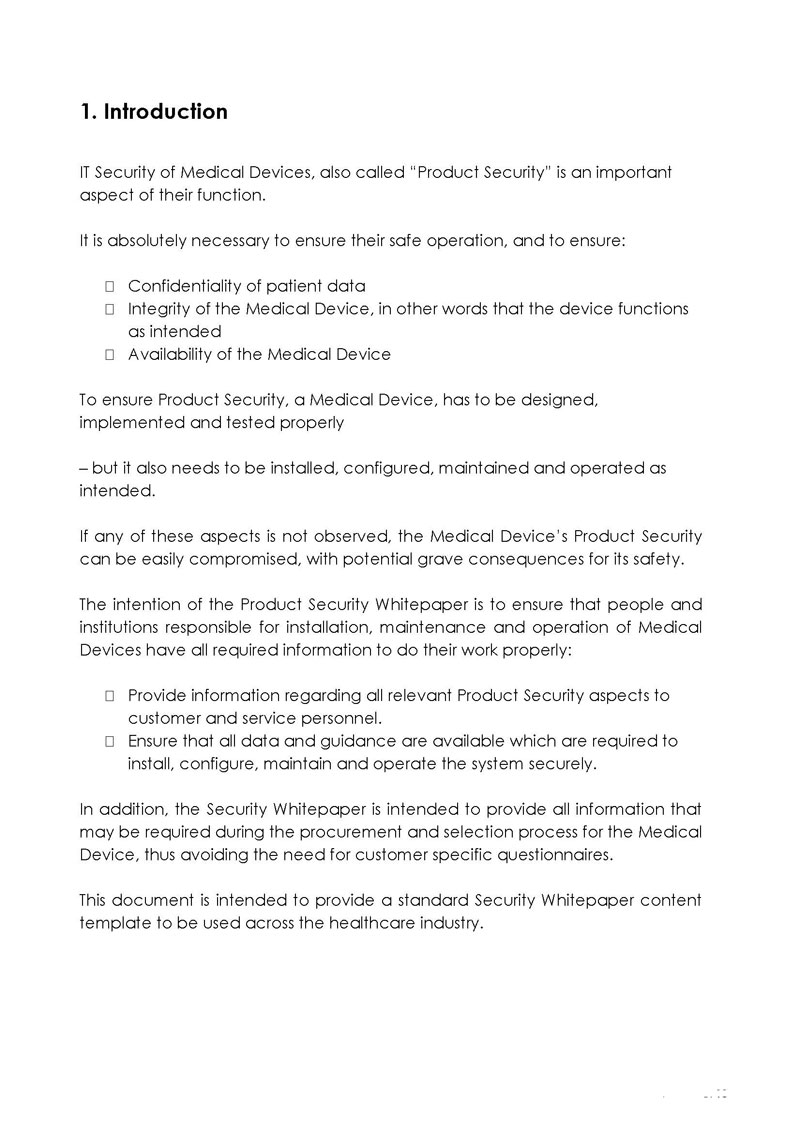
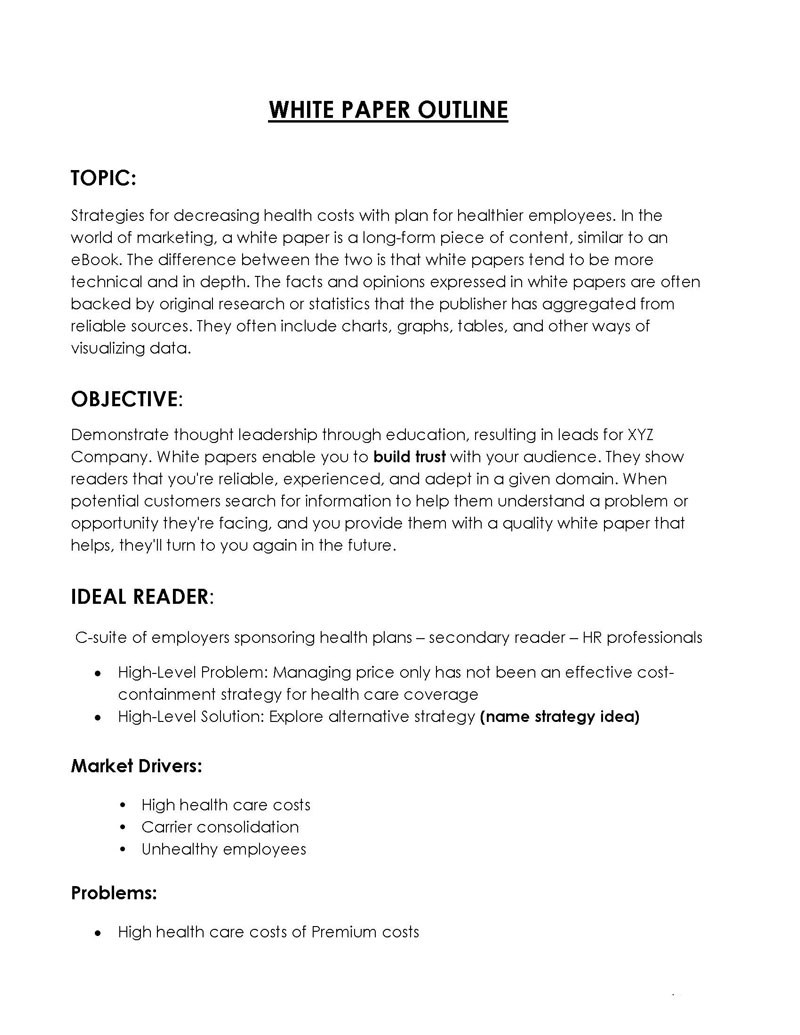
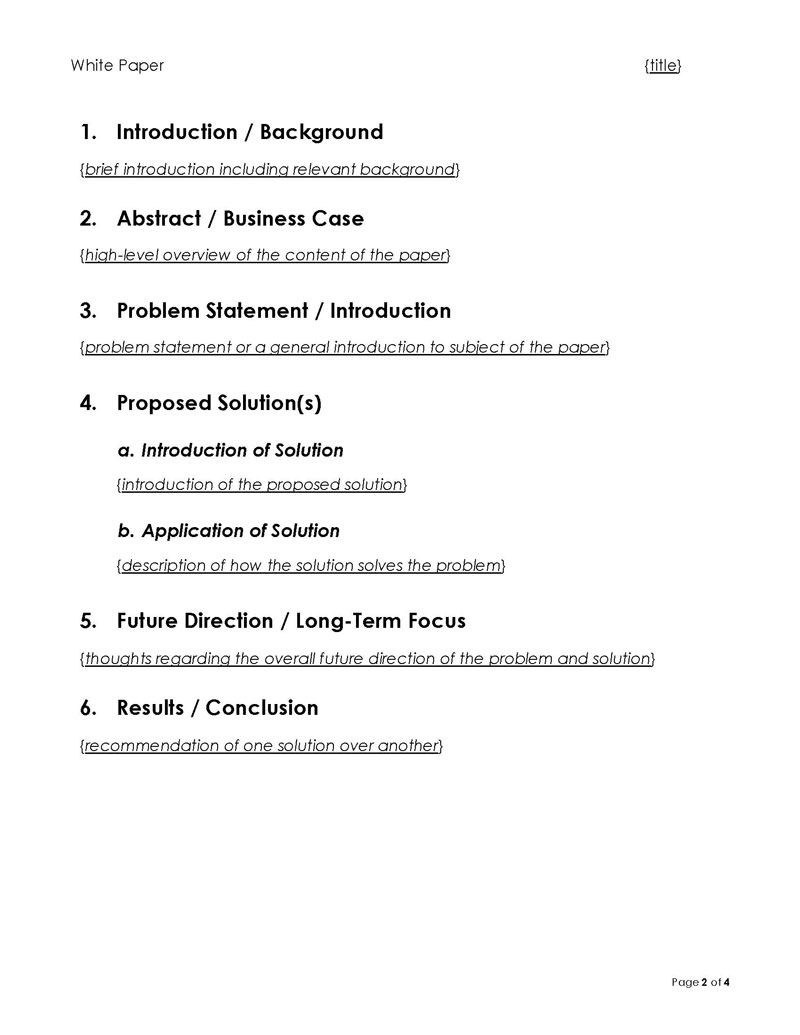
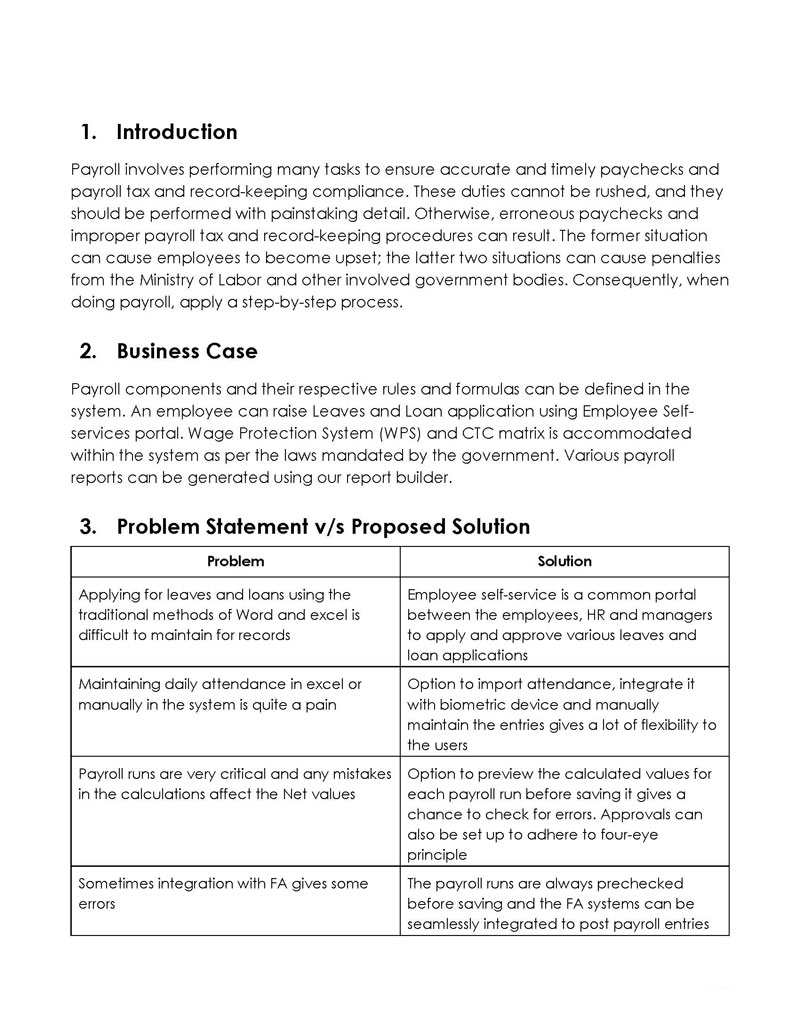
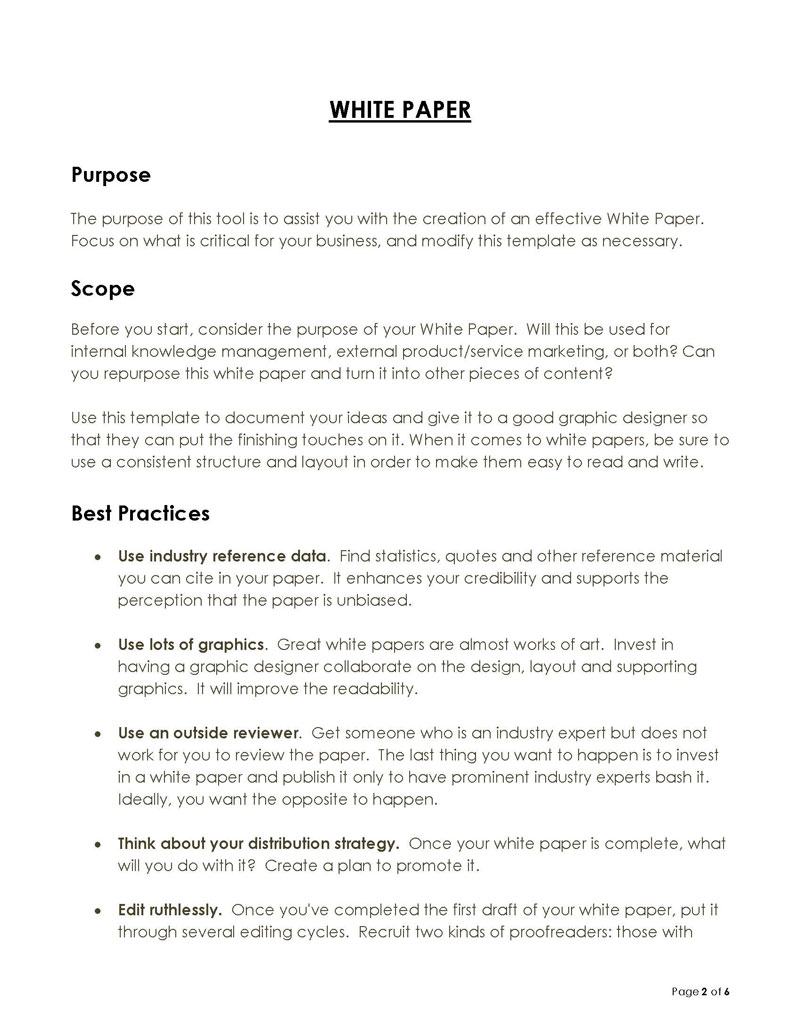
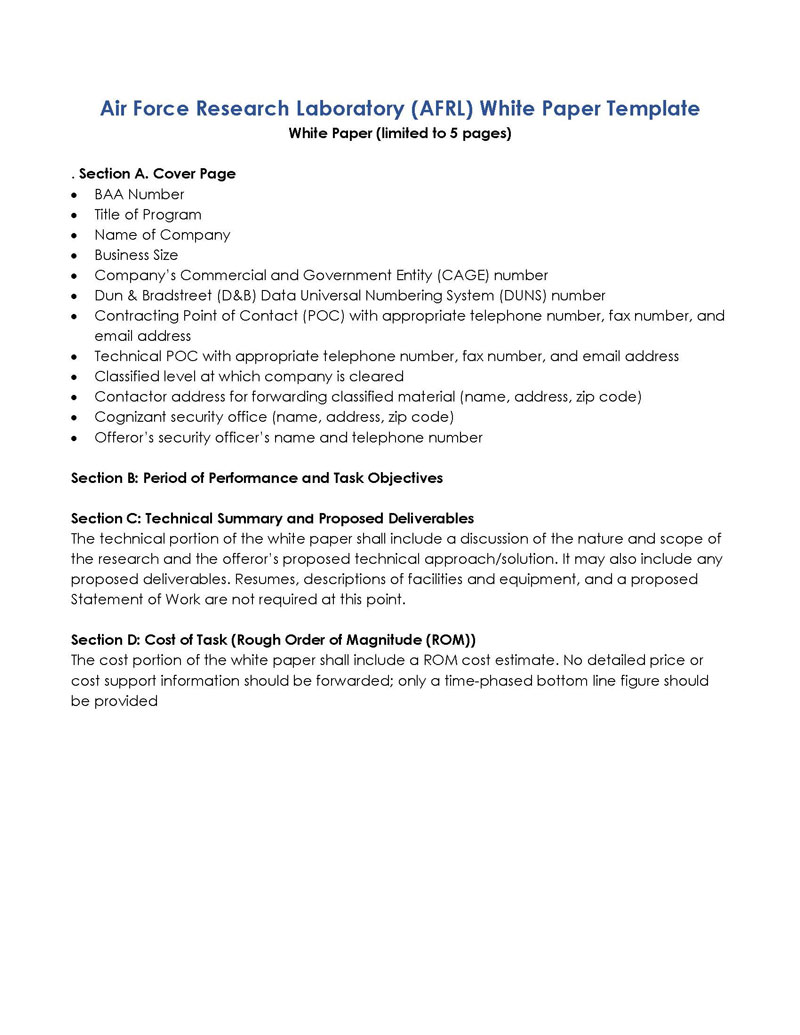
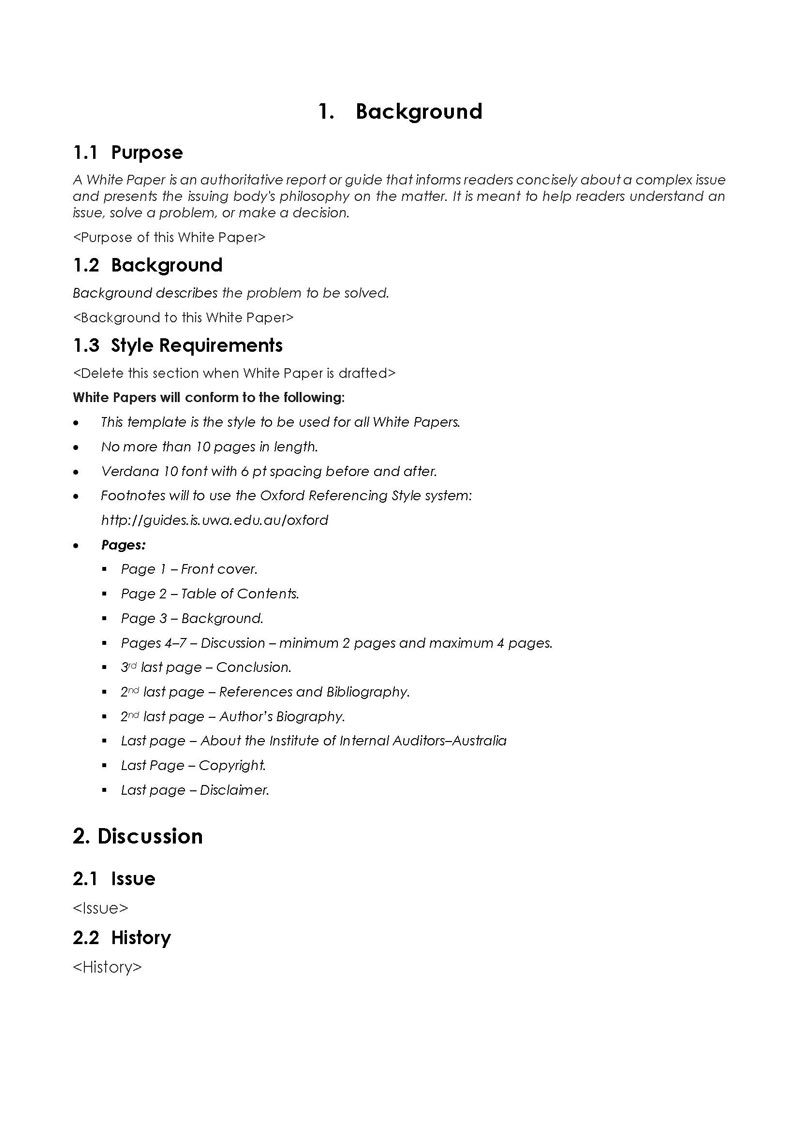
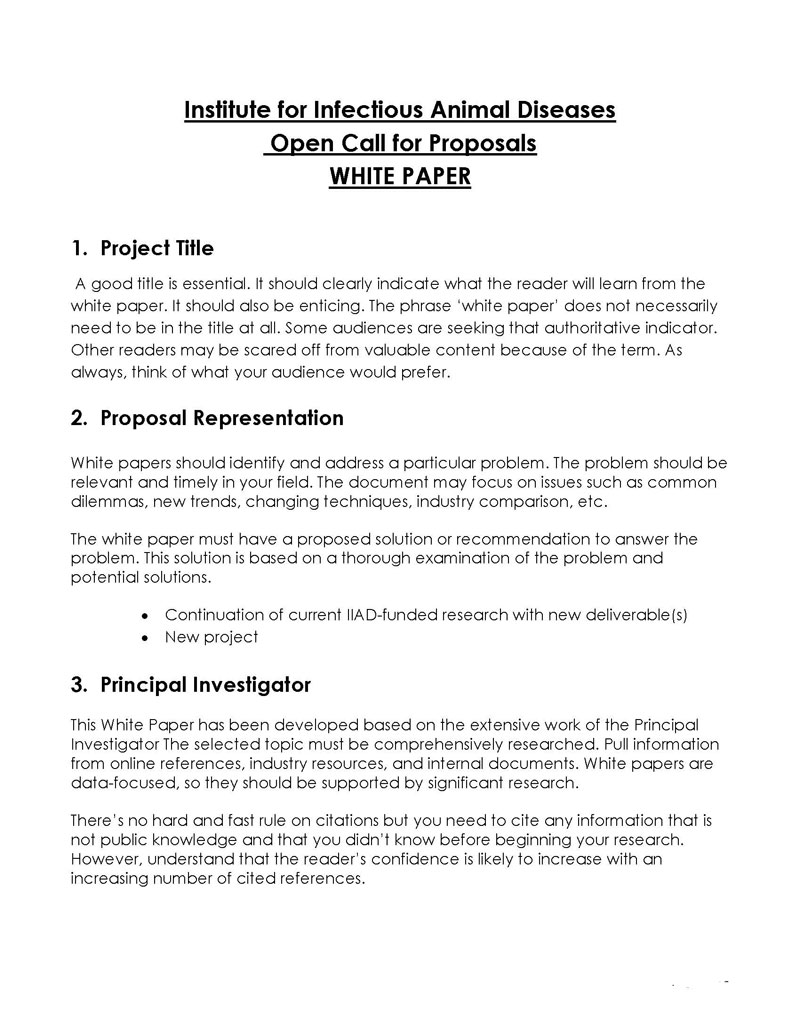
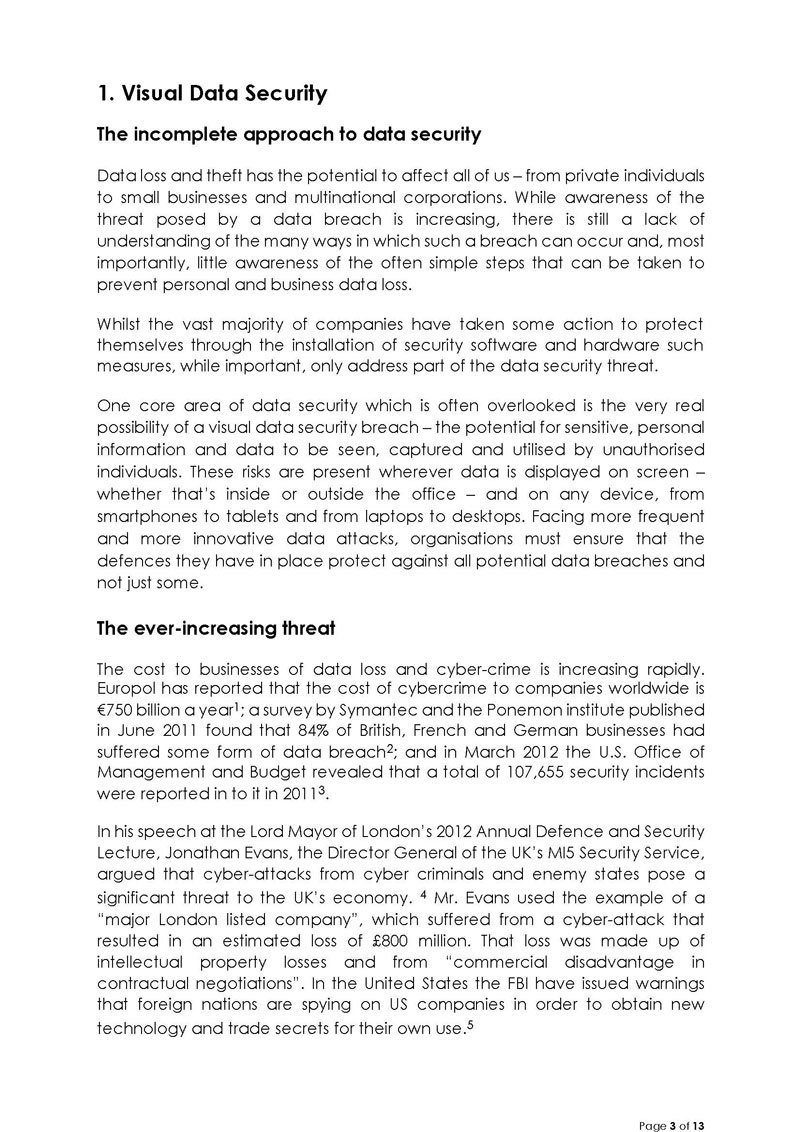
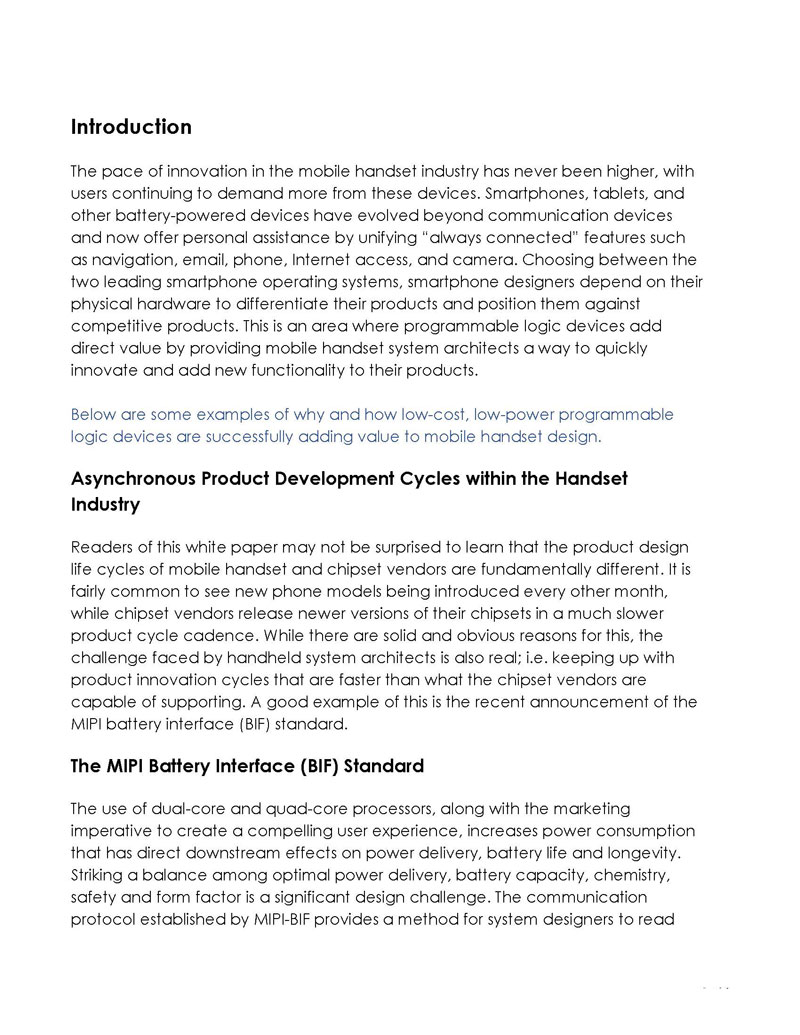
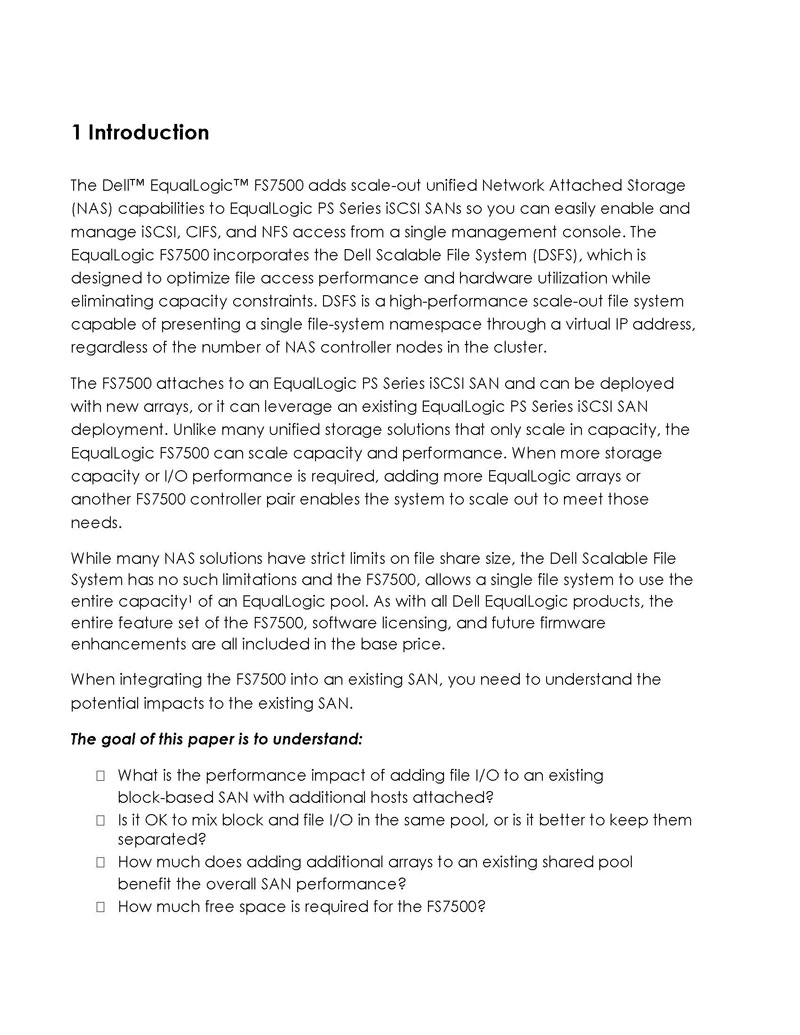
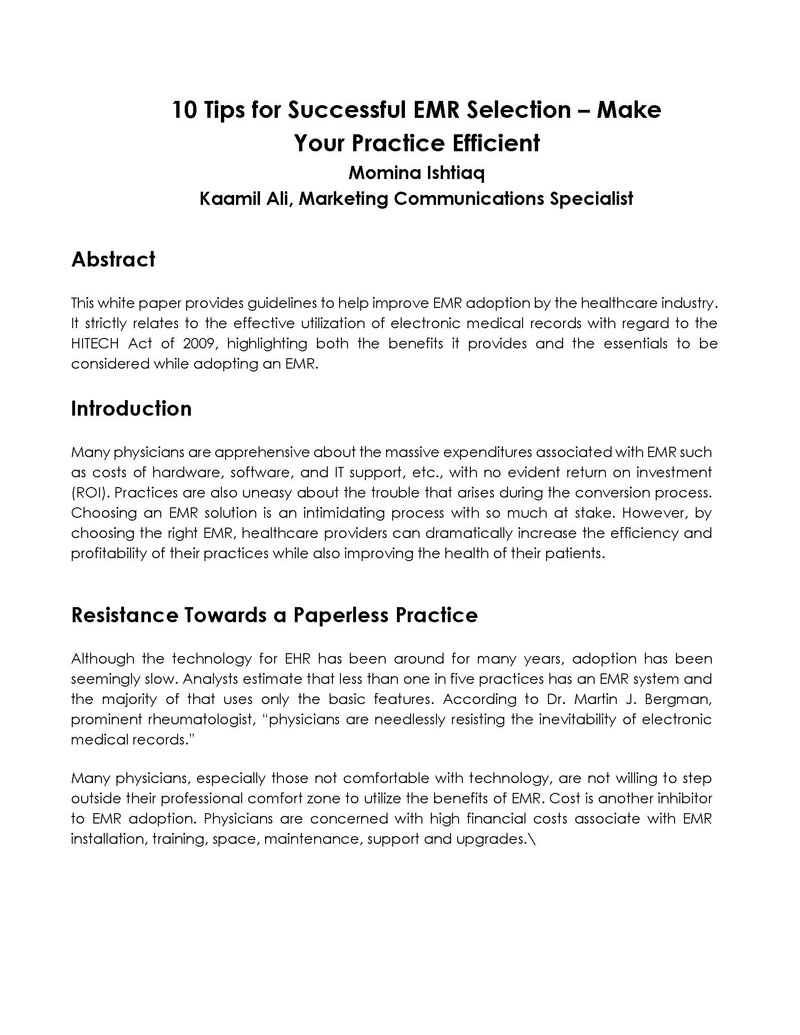
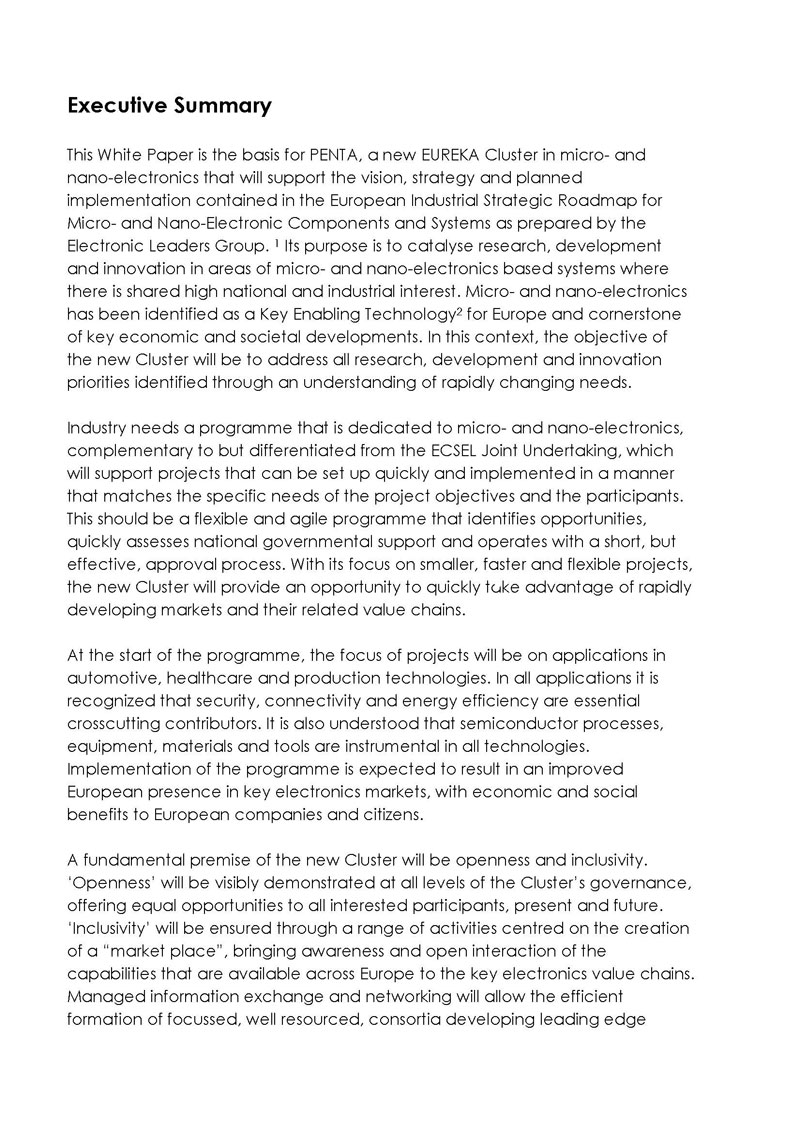
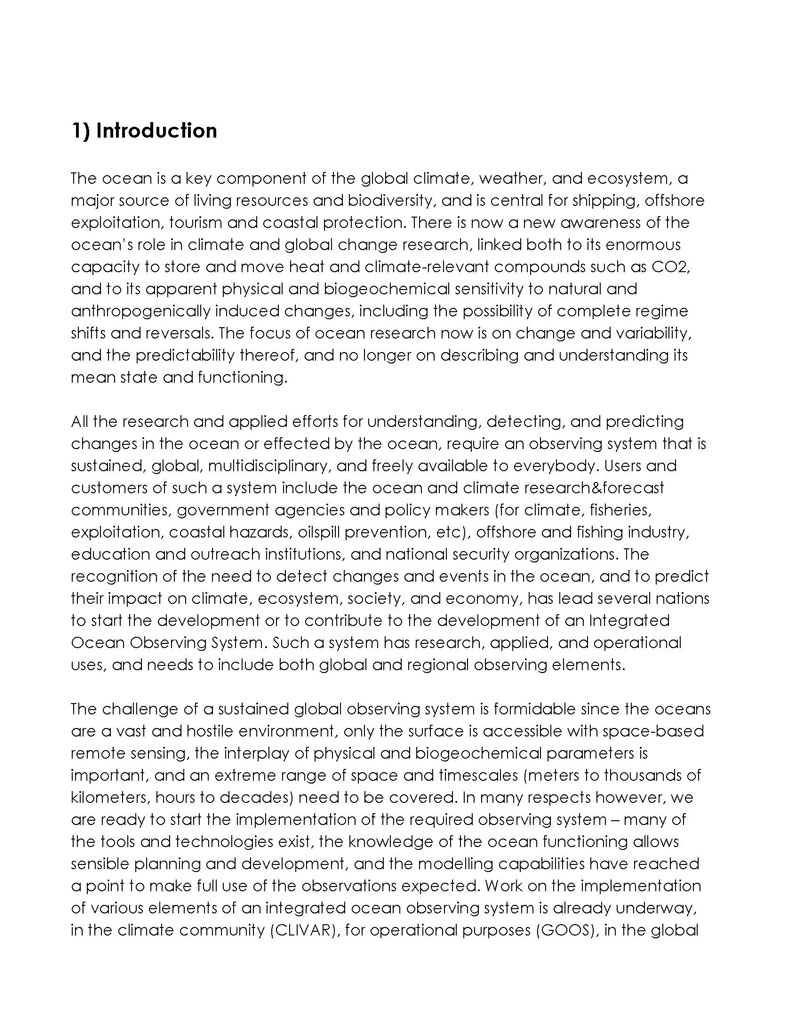
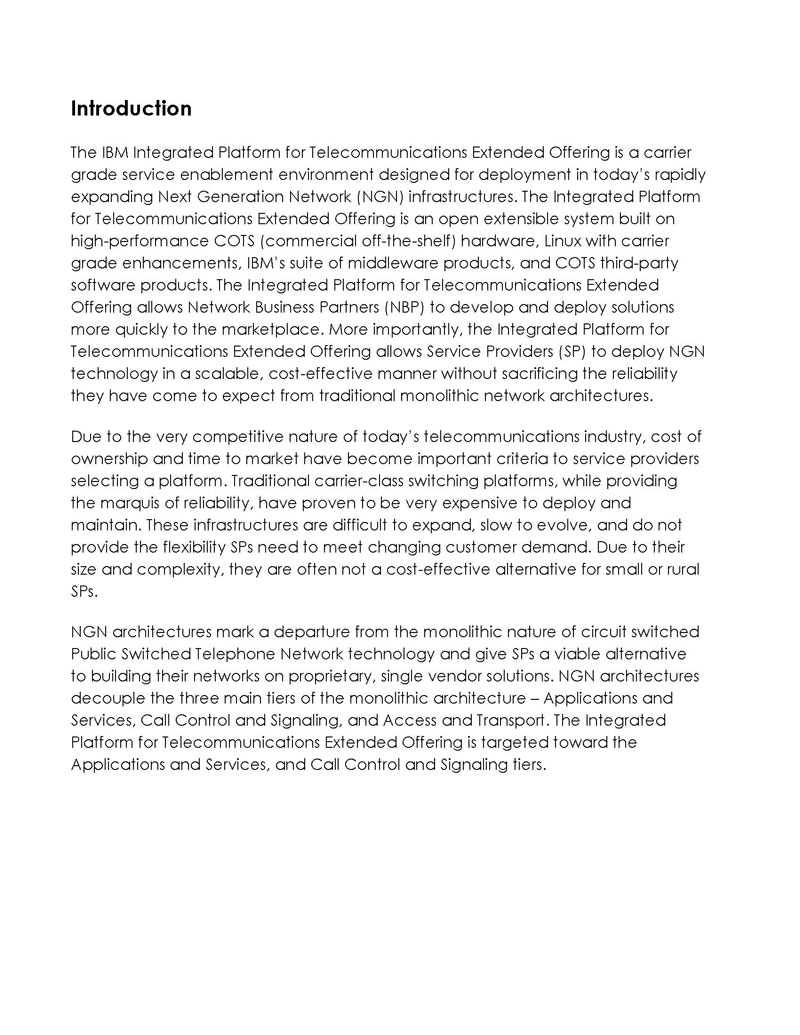
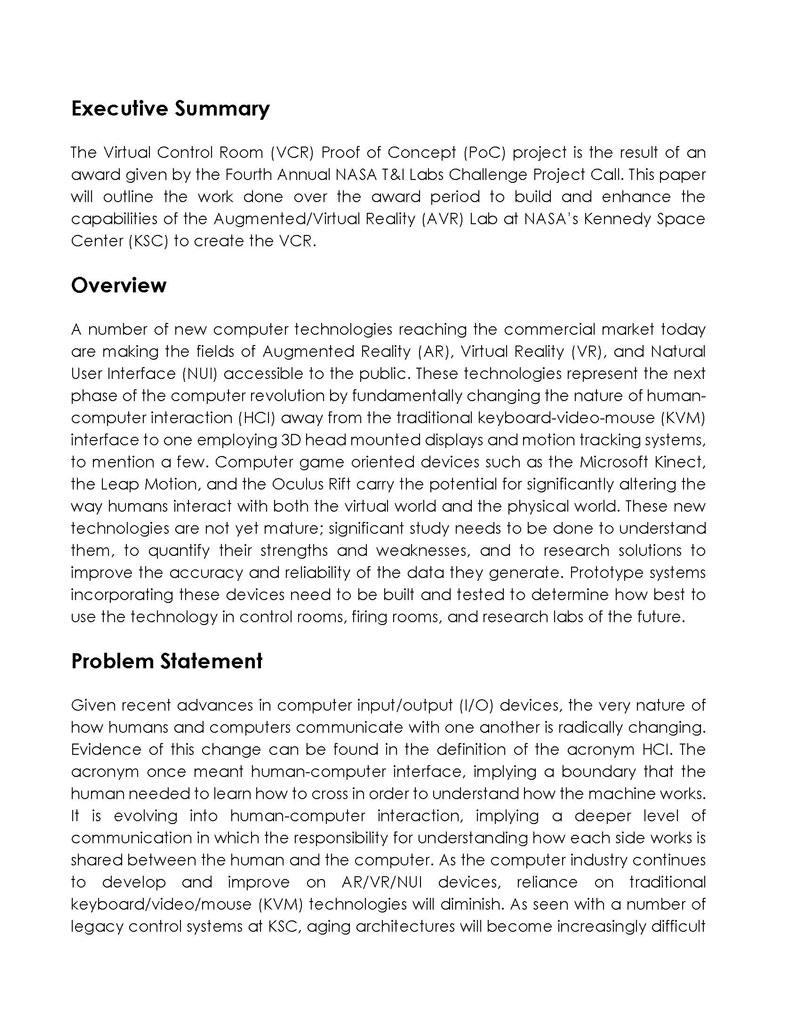
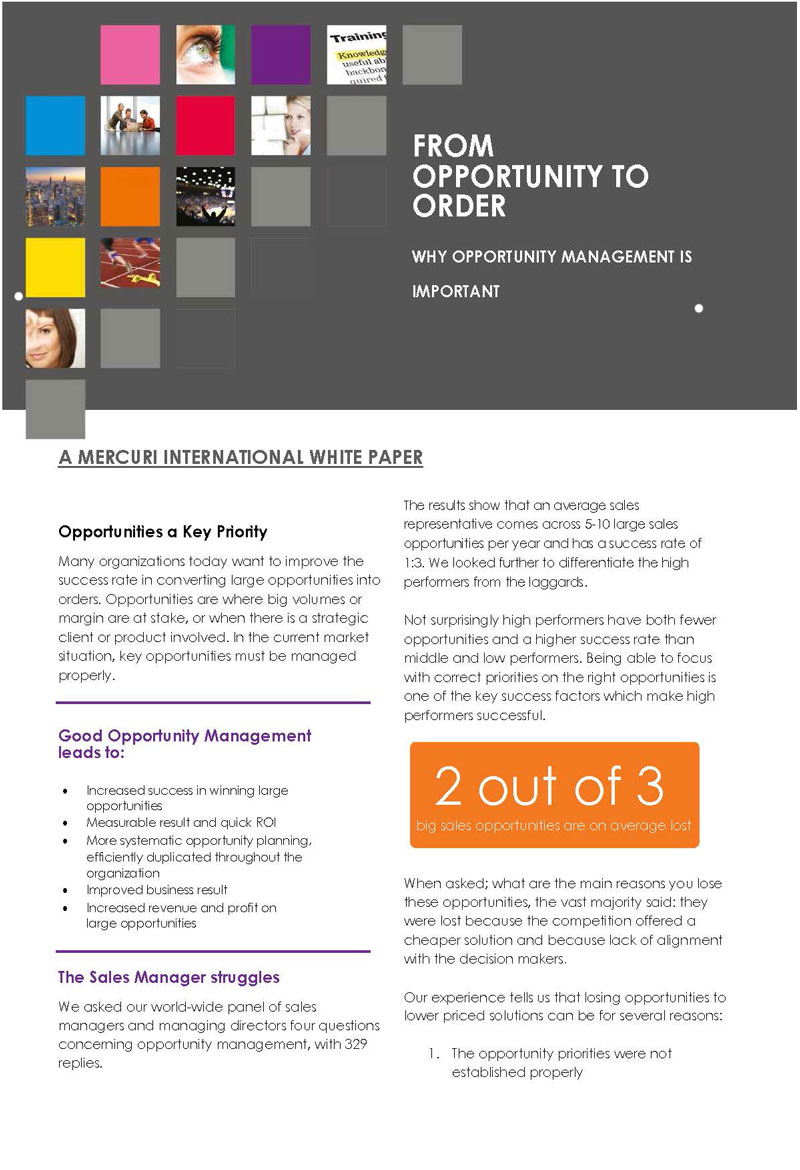
Who Benefits from a White Paper?
The goal of today’s white papers tends to be to get audiences to engage in a specific way that supports the author. Whether signing on to be an investment partner in a new blockchain project or convincing commercial customers of the superior efficacy of the latest tractor model coming out of research & development, it put the technical backing and detail behind proposals given for support.
The key factor of educating the audience makes this paper stand out, so two primary benefactors tend to be the marketing campaign in being able to provide a highly technical and convincing document to customers and for consumers to gain a better understanding of what the product or service actually is or will do.
Third parties also benefit from white papers. The media clearly takes advantage of white papers as static resources directly from providers about new products or services coming online. The resources give reporters a solid basis for understanding the proposal or project and ideas for questions to find out more details to use in news stories.
Another category of readers who benefit tends to be the industry and business community a company operates in. White papers are frequently distributed in business-to-business networks to build relationships, add to industry discussion, and help foster compatibility and coordination, especially when products and services need to work with each other but are produced by different market players.
White papers also benefit those who like to see case studies where examples provide the application of a product or idea with a relevant competitor or peer in the same industry. Seeing the proposal in action and the results gives this paper more relevance to industry readers who want to see action versus theory.
Those who rely on references for information and additional related research benefit because white papers give them a ready source for additional sources they might have missed or not been aware of over time.
Finally, the author gains the eventual benefit of trust via the white paper produced for audiences. This trust often develops into goodwill and a sense of brand loyalty. Customers feel engaged; they know where the company is going with its idea, what to expect, and when it will produce a benefit that people want to be a part of.
This relationship is particularly powerful today in technology circles where so many new ideas are in design and prototype stage and don’t realize full fruition until there is enough investment to move to production.
Types of White Papers
There isn’t one set format for white papers; they can be written in different forms and for different purposes.
Some of the most common formats include the following:
Backgrounder
This style is intended to provide all the research, logistical details and technical reference as an audience might want to have a deep dive into how a product or service is developed and what it is expected to do.
A primary angle used in this version of this paper involves taking very complicated material and rewriting it into a form that enhances readability and understanding by a mixed audience from various backgrounds.
Problem-solution
True to the traditional marketing aim, this style of the paper identifies a problem or need that readers have and points them in the direction of how it can be solved. Of course, the solution is the product or service being pitched in the white paper, but how that argument is made is supported by in-depth data, analysis, and research.
Numbered list
Used for much faster digestion and scanning by audiences in a hurry, usually at conventions or similar, the numbered list punches out the key benefits and aspects of a proposal.
It is commonly written with lots of bullets, numbered lists, high-impact statements, and 20-second soundbite sentences. Media types tend to favour this white paper because it aligns easily with press releases and 15-second briefings.
Hybrid
As the name implies, the hybrid is simply a combination of styles. There is no fast and set rule that a paper can only be one approach and nothing else.
How to Write an Extraordinary White Paper
Given below is a step-by-step guide on how to write this paper. You can also follow these steps for creating a standard white paper that can be used multiple times and for various purposes:
Choose the right topic
What good is this paper if it doesn’t pertain to anything a given reader is interested in? The topic choice of the paper written and provided should have significant value to the audience.
For example, if a white paper is being provided to an audience of construction dozer buyers, then it should likely be about the latest technologies available in dozer assembly. Talking about advances in accounting methodology or factory labour management probably isn’t going to resonate very well.
Match the topic to the audience the paper will be provided for. The better the connection, the more likely the paper will not only be read, but it will also be passed around as well.
Define the audience
Who is the expected reader of the paper going to be? In practice, there will be lots of different types of readers, but one category, in particular, should be the target. If the goal is to increase sales, it should be a prospective buyer.
However, the white paper needs to be specific enough to speak to a certain buyer that is the desired customer for the company and represents potentially a big account. It can also be tailored for retaining large customers, convincing them to stay on board for the next version of a product versus going elsewhere.
There is no problem with having multiple white papers for different audiences. One just needs to make sure that the information in one paper to the next is consistent and does not create contradictions a smart reader might catch.
Remember, different levels of audiences expect and want to see different details. Executive readers will be interested in fast-pitched, high-quality content that offers new opportunities to be part of. Research and scientist types, on the other hand, will want technical discussions to see if they themselves are on the right track or if someone has created something new they are not aware of.
Choose a good design
White papers are as much about visual presentation as they are about content. Anyone can write a word document. However, it’s quite another feat to produce a paper that looks and reads like a top industry magazine, including all the related imagery, professional layout, and easy-to-reference content sections.
Both show that the author is a serious player and ready to be part of the industry versus a bargain basement startup that needs to learn the ropes. If your in-house skill is not top grade with desktop publishing, then focus on writing the paper and outsource the final design display to a contractor with the layout design skills.
Most will use tools similar to Adobe InDesign to create a finished product worth industry attention. You can also choose your white paper’s design from the pre-made templates, customize it according to your preference, and edit and add information.
Write the problem statement
As noted earlier, a good paper clearly identifies the problem to be solved by its recommendation. This helps pull in the reader as he or she is the primary party affected by the problem and looking for the solution in the first place.
Write a compelling introduction
The introduction provides the reader with a concise overview of what the rest of the paper will contain. These key points are the bread and butter of the rest of the writing. Anything with a good, catchy start has a high success chance of keeping a reader involved and wanting to read more.
The same goes for white papers. An introduction that drones on or fails to produce an attractive message will convince a reader to look elsewhere for more interesting information. So, a good paper starts off with a hard-hitting, eye-catching introduction.
Remember, some folks might not have hours to read the paper and may decide on whether to save it for later or delete it based on the first five or ten seconds of reading. So, a good introduction matters a lot.
Provide useful information
Along the same lines as the introduction, the content of the paper should be valuable and stuffed with information and details a customer or interested reader would want to know about.
This should include research, tables, measurements, tests, and their results, especially when compared against competing products and services, direct and indirect benefits of the white paper’s solution, and possible applications.
For example, if this paper talks about a paint product, applications with multiple benefits would be more useful than those with a singular benefit. If one is showing the efficacy of new external paint, it is durable in hot environments and reduces the temperature of a building it is applied to by 20 or 30 degrees, provides a dual benefit, and would likely get a lot of a re-reading of the white paper.
Again, this depends on the primary audience, but once decided, the content should deliver value consistently from section to section.
Tell a story
No one wants to be buried with large statistical charts, lifeless analysis summaries, or lab results (well maybe almost no one; Alan Greenspan, for example, enjoyed reading droning government economic reports when he started in his career).
Instead, a white paper should be part of a bigger story about how the company evolved to produce the product or service being discussed in the paper. This type of feel-good over-arching message tends to bring people on board as they want to be a part of the story themselves.
They can do so through purchasing, engagement, or investment, which is why a call to action at the end of the story is important to get a reaction to a well-written white paper.
Include the call to action
When writing a white paper, it’s very easy to get caught in the structure and details and provide a sizable amount of information. However, again, the primary goal of the document is to bring the reader to a call to action, an expectation of what they are supposed to do with the information provided.
That might be support, purchase, engagement, direction, or similar, but there should always be some detail of what the reader is supposed to do next after finishing the document.
Finish with the outro
The ending section of the paper brings it to a natural conclusion. It reinforces the primary message and topic and what the reader can do next to stay involved. This section should not be that long, nor should it introduce anything new. At best, it’s primary purpose is reinforcement and closure.
Common Mistakes to Avoid
Most mistakes happen because of a lack of planning and a full understanding of what it takes to produce a good document. This is typically the case with demands for papers under fast deadlines and not understanding what the entire development process requires.
Fortunately, good planning and document design can avoid these same common mistakes before the writing starts:
Not writing multiple drafts
No one is such a perfect writer that they can produce a white paper in one draft. In fact, the best papers have gone through at least five to ten revisions, edited by multiple readers and experts before ever being ready for publication. You can also use a template for writing the first draft of your white paper.
Avoid the sales pitch
Clearly, coming across too much like a sales pamphlet or buying pressure message is going to make the white paper suspect. Worse, it questions the company’s credibility as the paper format is expected to be information based on facts and research generally and technical in nature. The backlash towards a company that uses it just to make a sales pitch can end up lasting and hard to correct long after.
Being boring
As noted earlier, good white papers are interesting and powerful, drawing the reader into the topic instead of repelling them. If the writing group can’t stand to read the paper after a few paragraphs, imagine what the audience is going to think.
Focus on being interesting and valuable at the same time. Every paragraph should give the audience something they can use and react to. If not relevant, then the writing is then a waste of space and the reader’s time.
Being too abstract
White papers are desirable because they get into the nuts and bolts of how a proposal will work. That means they are down-to-earth, and readers can understand how the concept is being implemented or the product delivered. As a result, white paper writing has to avoid conceptual ideas as the main crux of the paper.
Those kinds of discussions may work for brainstorming pitches or design visualisations, but not in a white paper. When things are described, they are referenced in real materials, real processes, and functions performed by real people.
Avoiding acknowledgment of mistakes
Part of the beauty of a white paper is that it also involves ground-truthing a proposal. That means all the technical work put into the paper is going to an audience that:
- Is versed in the subject topic with their own training and experience, and
- It will be reviewed by them as to whether the topic is a good idea or not ready for prime-time.
Sometimes, white papers expose mistakes, and criticism will be pointed out. This is not a bad thing. It helps the author see aspects that might not be obvious internally and can be corrected. More often than not, mistakes in a white paper’s logic can help produce a better product or service in the end. More than one designer or product team has pulled back a paper based on mistakes found and produced a far better eventual product or service as a result.
Ignoring an expert’s opinion
Again, the point of this paper is to engage, which means some experts weigh in and give their opinion on whether something is a good idea or if there are risks not being considered. The smart path is to incorporate these experts and revise the paper where possible. Otherwise, it remains a public conflict.
How to Distribute a White Paper
Getting such paper out in front of people is essential. If audiences don’t know the paper exists, they won’t be able to react to it.
Social promotion
Obviously, social media involves using social media tools. The great thing about them is that they are relatively free. So, the reach is immense, and the cost of use is practically nothing. Just about any marketing reach should be using these tools. Not doing so is simply ignoring a whole segment of a viable audience, particularly younger generations.
Influencer marketing
Specific individuals are followed regularly online, more so now than ever, because their recommendations are considered valuable. While these influencers might not be technical experts, they are considered unofficial experts by their audiences.
So, white papers distributed through them can be very powerful. The worst that such an influencer can do is refuse to review and show the paper, so try to connect and see what happens. It helps to have already a community relationship with them instead of reaching out to parties without warning.
Email marketing
If a business already has a customer base, email list or contact group, email marketing should be used. Simply attach the paper as a PDF document to the email address and send it out. Again, this is practically a no-cost method of marketing that has a far reach and can pay for itself a thousand times over if even one customer reacts as desired.
Frequently Asked Questions
It is content that is restricted. Typically, companies ask a reader to provide an email or contact information before providing a white paper. This trade gives the business valuable contact data to reach out to and send more information in exchange for white paper document access.
See the discussion above regarding methods of making a white paper available to audiences.
The most effective method is probably using gated content access, which identifies the reader upfront, so you know who has tried to access the paper online.
Absolutely, it can be used for B2B marketing. In fact, white papers tend to be mostly used for marketing to other businesses versus end retail customers.












